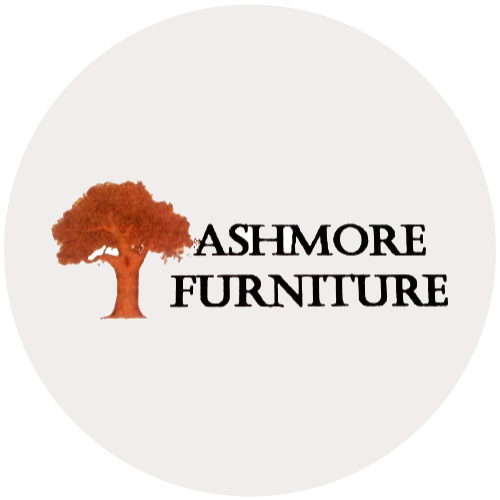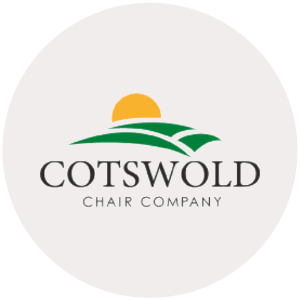The Oldest Furniture Store in Teesside
Early Beginnings
Ernest Oswald (Ossie) Race was born in Butterknowle, County Durham, in 1890. He left school in 1904 (the same year that the Dormans Museum opened). Records show him dealing in furniture since 1910, and he became manager of Eatons in Sussex Street, gaining valuable experience in the furniture trade. In 1912, he became a district manager for Prudential Insurance and joined the Green Howards.
The Great War of 1914 put paid to his plans to open his business properly. However, in 1918, when Ossie was demobbed at the end of the war, he opened his first shop in Hartington Road. His younger brother Wilf had returned from Canada, and Ossie offered him the chance to take over the shop. Ossie also opened a shop in Victoria Road in 1920 and later moved to Newport Road, and both shops were called ‘Race for Furniture’.
The family lived in Woodlands Road until Ossie sold his home to the Munro Butchers family before setting up his new shop in Borough Road in 1926. Wilf sold his shop to the Mellor family, where it became a well-known pet shop, but Ossie traded successfully for many years, mainly dealing in new or second-hand furniture, hardware, carpets, and rugs. Business was hard during the 1920s and 30s, with many out of work and cash scarce, but Race for Furniture became the byword for furniture in the local area.
The War Years
Ossie’s son Clive was born in 1921 and, after leaving Hugh Bell School in 1937, served a useful apprenticeship in the carpet and linoleum department at Binns in Middlesbrough. Just as the ‘Battle of Britain’ broke out, he joined the RAF and served overseas throughout the Second World War.
During the war years, there was very little furniture produced, and many companies had to supply the war effort. Manufacturers such as Harris Lebus of Tottenham turned their attention from cabinet furniture to making Mosquito aircraft. Deliveries were made by handcart, in Ossie’s Jowett car, or by contractors such as Zealand Brothers.
Clive was demobbed in May 1946 and joined his father in the family business. Times were very hard for the whole country, and what little furniture that was produced was only obtainable with dockets. Everything had very strict price controls by the ‘Board of Trade,’ but the ‘Utility Furniture’ that was produced was of very good quality, although quite plain in design and of very limited choice. An oak or mahogany double bedstead was £6 8 shillings, a fully sprung 3-piece suite was £45, and a solid oak or mahogany table and chairs was £35.
Post-War Developments
Ossie died in June 1953, leaving his wife Beatrice and son Clive, who took over the business and started a program of major initiatives. In 1956, he purchased his first Bedford van, expanded into next door, and in 1959, with his wife Leah, they built their first modern shop front. Leah and Clive made many internal alterations, and the company continued to prosper, building an excellent reputation for good quality furniture, floor coverings, and personal service.
Modern Times
The 1960s and 70s were a very interesting time in furniture, with many new and exciting designs being produced after the post-war austerity of World War II. Race for Furniture embraced this new wave of design inspiration and began to steadily move more upmarket.
The business survived a Council ‘Compulsory Purchase Order’ in 1971, which left virtually all of the shops in the vicinity being partly demolished and left as an eyesore until 1984.
Clive’s son Iain was born in 1957 and, after a time studying and working in London, eventually joined his father at the end of the 1970s. Iain and Clive formed a dynamic and successful partnership, and in 1987, they completely re-modernised the shop with extensive building extensions and a new shop front. Clive retired in 1991, and Iain embarked on another huge period of growth and expansion.
Expansion and Growth
Under Iain’s stewardship, the company purchased land and built warehouses and another retail outlet called ‘The Pine Warehouse’ at Skippers Lane Industrial Estate in 1995. The success of this new venture was rapid and led to ‘The Pine Warehouse’ relocating into much larger premises off Portrack Lane in Stockton in 1997. The company also opened another store called ‘Home Interiors’ at this location and became a market leader in the new trend for ‘Lifestyle’ stores specialising in quirky contemporary furniture and accessories.
A huge period of further growth ensued to keep apace with the fierce retail competition on Teesside and the threat of the burgeoning internet. In 2000, the company relocated its warehouses to Pennine Way in Stockton, which became the headquarters for the rapidly growing business and had huge capacity for the many containers of furniture being imported from all over the world. The company also opened another branch in Northallerton.
Today
The family-run business still trades from its Borough Road premises and prides itself on supplying the people of Teesside and beyond with quality furniture and good old-fashioned service.
The Oldest Furniture Store in Teesside
Early Beginnings
Ernest Oswald (Ossie) Race was born in Butterknowle, County Durham, in 1890. He left school in 1904 (the same year that the Dormans Museum opened). Records show him dealing in furniture since 1910, and he became manager of Eatons in Sussex Street, gaining valuable experience in the furniture trade. In 1912, he became a district manager for Prudential Insurance and joined the Green Howards.
The Great War of 1914 put paid to his plans to open his business properly. However, in 1918, when Ossie was demobbed at the end of the war, he opened his first shop in Hartington Road. His younger brother Wilf had returned from Canada, and Ossie offered him the chance to take over the shop. Ossie also opened a shop in Victoria Road in 1920 and later moved to Newport Road, and both shops were called ‘Race for Furniture’.
The family lived in Woodlands Road until Ossie sold his home to the Munro Butchers family before setting up his new shop in Borough Road in 1926. Wilf sold his shop to the Mellor family, where it became a well-known pet shop, but Ossie traded successfully for many years, mainly dealing in new or second-hand furniture, hardware, carpets, and rugs. Business was hard during the 1920s and 30s, with many out of work and cash scarce, but Race for Furniture became the byword for furniture in the local area.
The War Years
Ossie’s son Clive was born in 1921 and, after leaving Hugh Bell School in 1937, served a useful apprenticeship in the carpet and linoleum department at Binns in Middlesbrough. Just as the ‘Battle of Britain’ broke out, he joined the RAF and served overseas throughout the Second World War.
During the war years, there was very little furniture produced, and many companies had to supply the war effort. Manufacturers such as Harris Lebus of Tottenham turned their attention from cabinet furniture to making Mosquito aircraft. Deliveries were made by handcart, in Ossie’s Jowett car, or by contractors such as Zealand Brothers.
Clive was demobbed in May 1946 and joined his father in the family business. Times were very hard for the whole country, and what little furniture that was produced was only obtainable with dockets. Everything had very strict price controls by the ‘Board of Trade,’ but the ‘Utility Furniture’ that was produced was of very good quality, although quite plain in design and of very limited choice. An oak or mahogany double bedstead was £6 8 shillings, a fully sprung 3-piece suite was £45, and a solid oak or mahogany table and chairs was £35.
Post-War Developments
Ossie died in June 1953, leaving his wife Beatrice and son Clive, who took over the business and started a program of major initiatives. In 1956, he purchased his first Bedford van, expanded into next door, and in 1959, with his wife Leah, they built their first modern shop front. Leah and Clive made many internal alterations, and the company continued to prosper, building an excellent reputation for good quality furniture, floor coverings, and personal service.
Modern Times
The 1960s and 70s were a very interesting time in furniture, with many new and exciting designs being produced after the post-war austerity of World War II. Race for Furniture embraced this new wave of design inspiration and began to steadily move more upmarket.
The business survived a Council ‘Compulsory Purchase Order’ in 1971, which left virtually all of the shops in the vicinity being partly demolished and left as an eyesore until 1984.
Clive’s son Iain was born in 1957 and, after a time studying and working in London, eventually joined his father at the end of the 1970s. Iain and Clive formed a dynamic and successful partnership, and in 1987, they completely re-modernised the shop with extensive building extensions and a new shop front. Clive retired in 1991, and Iain embarked on another huge period of growth and expansion.
Expansion and Growth
Under Iain’s stewardship, the company purchased land and built warehouses and another retail outlet called ‘The Pine Warehouse’ at Skippers Lane Industrial Estate in 1995. The success of this new venture was rapid and led to ‘The Pine Warehouse’ relocating into much larger premises off Portrack Lane in Stockton in 1997. The company also opened another store called ‘Home Interiors’ at this location and became a market leader in the new trend for ‘Lifestyle’ stores specialising in quirky contemporary furniture and accessories.
A huge period of further growth ensued to keep apace with the fierce retail competition on Teesside and the threat of the burgeoning internet. In 2000, the company relocated its warehouses to Pennine Way in Stockton, which became the headquarters for the rapidly growing business and had huge capacity for the many containers of furniture being imported from all over the world. The company also opened another branch in Northallerton.
Today
The family-run business still trades from its Borough Road premises and prides itself on supplying the people of Teesside and beyond with quality furniture and good old-fashioned service.




















